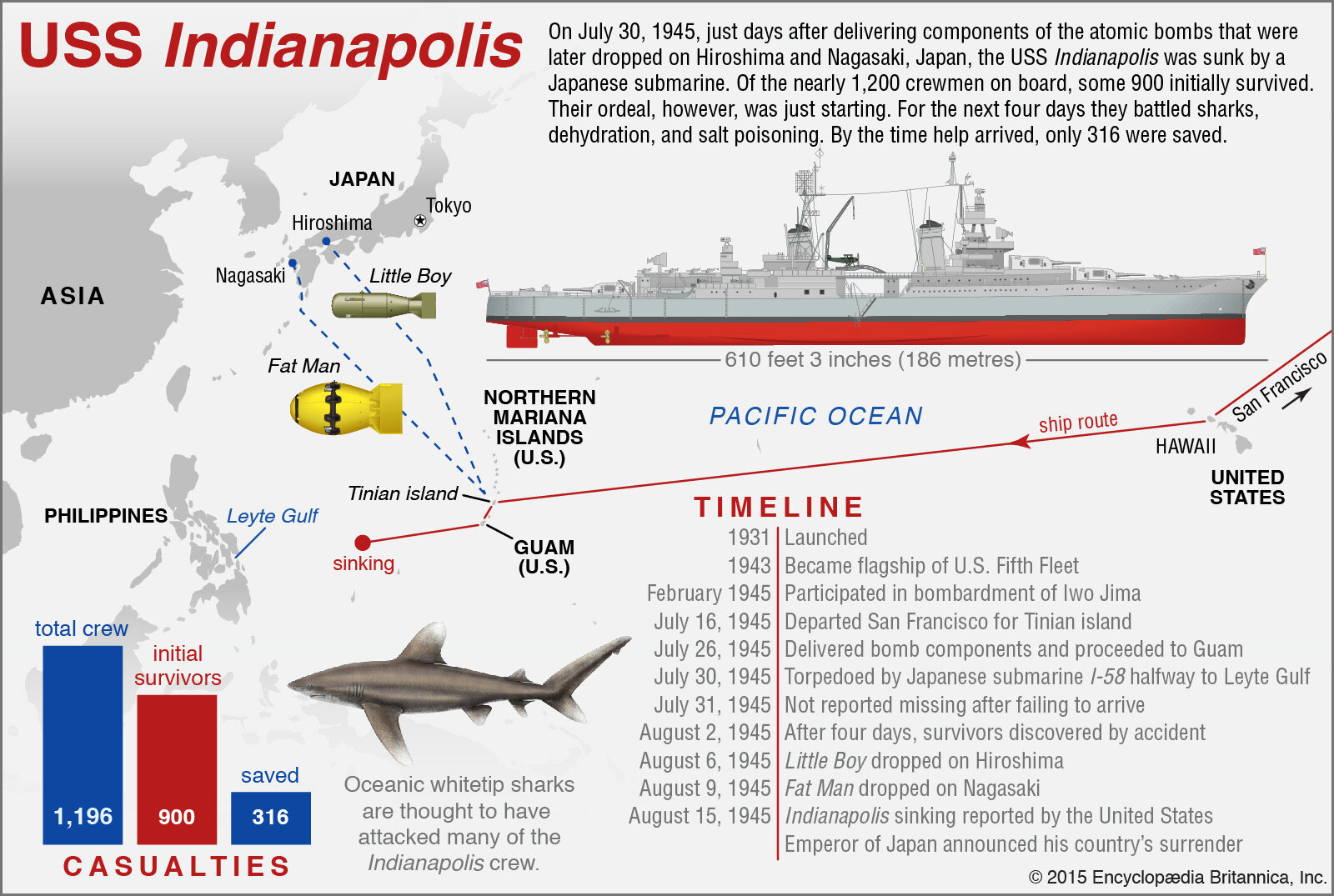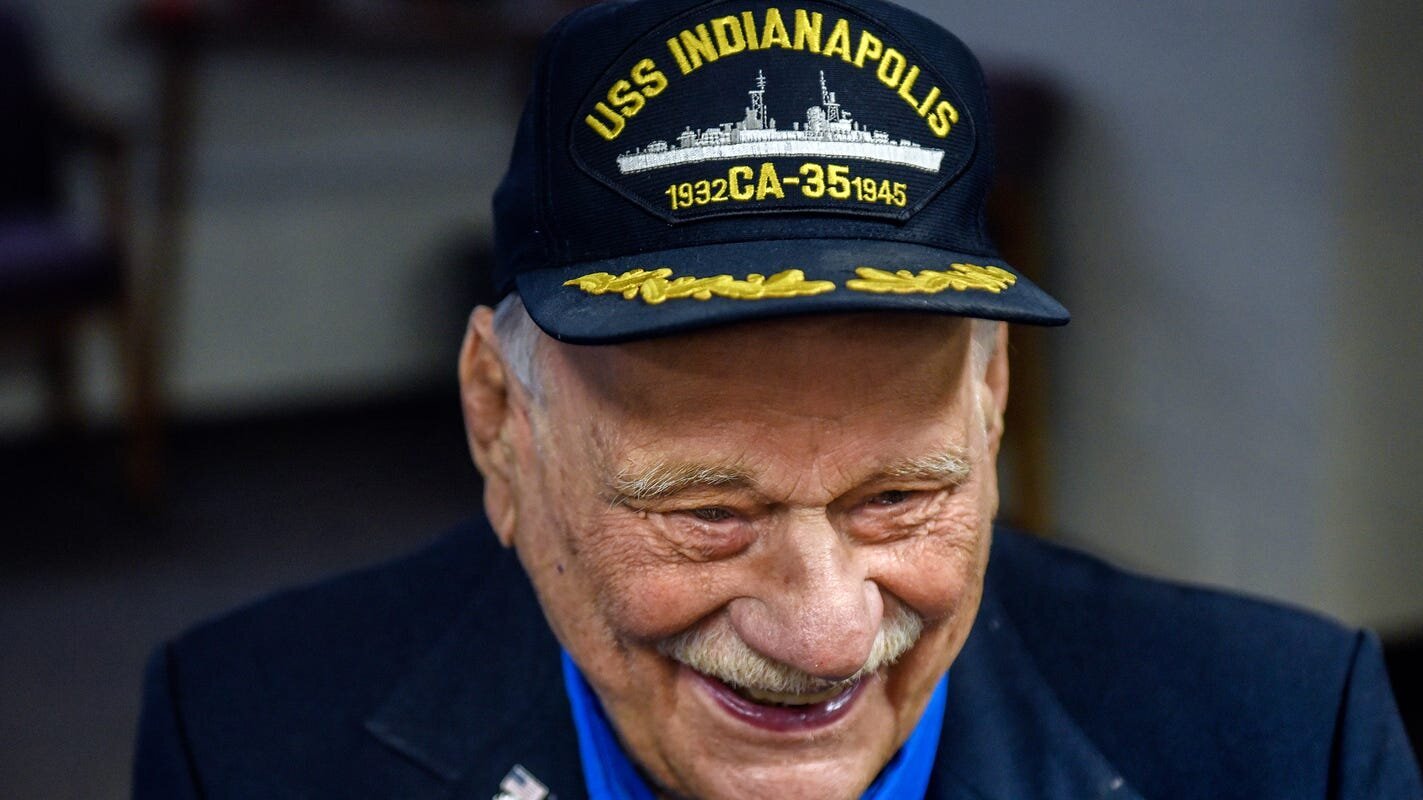75 Years On: The Sinking of the USS Indianapolis
On July 30, 1945 (75 years ago today) the USS Indianapolis was hit by a Japanese torpedo in the Philippine Sea, sinking in just 12 minutes. On board there were 1,196, 300 of which went down with the ship. The remainder were left floating in shark ridden water awaiting rescue, with no lifeboats, food, or water. The ship was not missed in terms of a scheduled arrival, and the survivors were only spotted accidentally four days later, with only 316 of the men still surviving.
The sinking of Indianapolis resulted in the greatest single loss of life at sea from a single ship in the history of the US Navy.
Court Martial
One of the survivors was the ship's captain, Charles Butler McVay III, who was court-martialled and convicted of "hazarding his ship by failing to zigzag". However, in October of 2000, Charles Butler McVay III's record was exonerated for his efforts in protecting his crew. The survivors are thankful that, 56 years later, their captains name has been cleared.
“It was easier to die out there than to stay alive. We really had to work at it.” - Dick Thelan, USS Indianapolis survivor
Discovery
In August 2017, after 72 years of staying hidden at the bottom of the Pacific Ocean after being torpedoed by a Japanese sub in July 1945, the USS Indianapolis was found.
Jaws
For many of us, Quint’s story about being aboard the USS Indianapolis was likely the first time we had ever heard this story. How it came to be included in the movie and who actually wrote it has been movie folklore for decades.
According to Steven Spielberg….
Howard Sackler, an uncredited writer on Jaws, one day said, “Quint needs some motivation to show all of us what made him the way he is and I think it’s this Indianapolis incident.” said, “Howard, what’s that?” And he explained the whole incident of the Indianapolis and the Atomic Bomb being delivered and on its way back it was sunk by a submarine and sharks surrounded the helpless sailors who had been cast adrift and it was just a horrendous piece of World War II history. Howard didn’t write a long speech, he probably wrote about three-quarters of a page.
But then, when I showed the script to my friend John Milius, John said “Can I take a crack at this speech?” and John wrote a 10 page monologue, that was absolutely brilliant, but out-sized for the Jaws I was making! (laughs) But it was brilliant and then Robert Shaw took the speech and Robert did the cut down. Robert himself was a fine writer, who had written the play The Man in the Glass Booth. Robert took a crack at the speech and he brought it down to five pages. So, that was sort of the evolution of that speech.
“Jaws without the Indianapolis speech would be like Hamlet without ‘To be or not to be.’”



